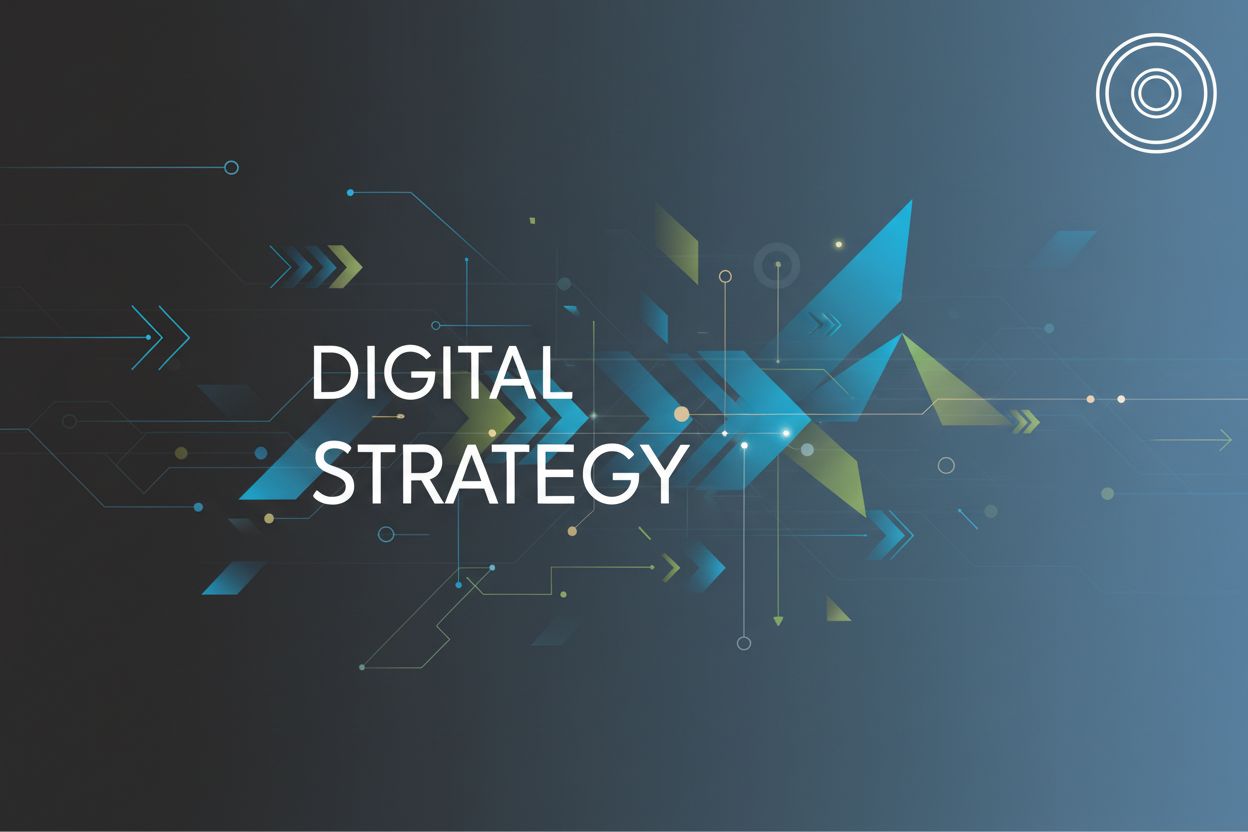What Are the 5 P's of the Marketing Framework?
TL;DR
Introduction: The Marketing Mix Evolved
Marketing, huh? It's changed a lot, hasn't it? Back in the day, it was all about the 4 P's: Product, Price, Place, and Promotion. These were the bedrock, the original recipe for success. Even now, understanding what you're selling (Product), how much it costs (Price), where people can get it (Place), and how you tell them about it (Promotion) is still super important.
But, the world changed--didn't it? Now customer experience, that's everything. Just having a good product at a fair price isn't enough anymore. We gotta think deeper. So, how do we evolve the mix? Well, we need to add more P's, right? We need to think about People—who are you really serving and how do you connect with them? And there's also Process—how are you actually delivering value and making sure it's a smooth ride for the customer?
It's about adapting, really. And getting more personal. Let's dive into what those original 4 P's are, why they still matter, and then explore the new additions that make the marketing mix truly robust today.
The Original 4 P's: Still the Foundation
Before we jump into the newer additions, it's crucial to remember the classics. These four pillars form the absolute core of any marketing strategy, and their relevance hasn't faded one bit.
- Product: This is what you're offering to the market. It's not just the physical item or service, but also its quality, design, features, branding, and packaging. A great product solves a problem or fulfills a need for your target audience. Without a solid product, everything else falls apart.
- Price: This is the amount customers pay for your product. It's a delicate balance. Too high, and you might scare customers away. Too low, and you might devalue your offering or struggle with profitability. Pricing strategy needs to consider production costs, competitor pricing, perceived value, and your overall business objectives.
- Place: This refers to how and where customers can access your product or service. In today's world, "place" is incredibly broad, encompassing online stores, physical retail locations, distribution channels, and even how easily a customer can find and purchase your offering. Accessibility is key.
- Promotion: This is how you communicate the value of your product to your target audience. It includes advertising, public relations, sales promotions, direct marketing, and digital marketing efforts. Effective promotion creates awareness, generates interest, and drives demand.
These four P's are the bedrock. They're the essential questions every business needs to answer. But as markets become more complex and customer expectations rise, we need to build upon this foundation.
The First New P: Purpose – Why You Do What You Do
Okay, so Purpose, right? It's more than just making money; it's about why you're making money. What's the point, really? I mean, does your company even care, or is it all just spreadsheets and targets?
- Mission, Vision, and Values: These aren't just words on a wall, you know? A company's mission should be its north star, guiding every decision. The vision? That's the dream, where they see themselves going. And the values? Those are the rules they play by. It's like, if a healthcare company values "patient-first," are they really putting patients first, or just saying it?
- Connecting with Customer Values: People buy into things, not just things. If your brand's purpose aligns with what customers care about, you're golden. Think about it: a retail brand that champions sustainability? That's gonna resonate with eco-conscious shoppers way more than just another cheap t-shirt.
- It's gotta be authentic. Customers can smell BS a mile away. If you're faking it, they'll notice. You can't just slap a "purpose" label on something and expect people to believe it. i think you have to live it.
The Second P: Product – What You Offer
So, what is a product, anyway? Obvious question, maybe. But it's not just about slapping something together and selling it, is it? It's about what you're actually offering to the world.
- It's More Than Just the Thing: Think features, quality, design, branding—the whole package. Like, Apple doesn't just sell phones, they sell an experience, right? That's product done right.
- Solve a Problem, or Create Demand: Does your product scratch an itch? Or are you convincing people they need something they never knew existed? Dollar Shave Club didn't invent razors, but they made getting them way easier (and cheaper).
- Adapt or Die: The market's always changing. If your product isn't evolving, it's dying. Look at Blockbuster, they didn't adapt to streaming--and, well, you know what happened.
It's not enough to just have a good idea. You gotta nail the execution. If you don't, someone else will. And that's where market fit comes in, making sure what you're building is something people actually want.
The Third P: People – Who You Serve
Okay, so you got your product, you got your purpose... but who are you actually selling it to? Seriously, it's like shouting into the void if you don't know your people.
- Buyer Personas are Key: You can't just say "everyone" is your customer, right? You need personas. Think of them as fictional characters that represent your ideal customers. What are their pain points? What makes them tick? What are their goals? For example, if you're selling project management software, maybe one persona is "Project Manager Paula" who's drowning in spreadsheets. Another could be "ceo Carl" who just wants to see the big picture without getting bogged down in details.
- Map their Journey: Customer journey mapping is HUGE. It's not enough to know who they are, you gotta know what they do. What steps do they take before, during, and after buying your product or service? What are their feelings at each stage? A good map will reveal all sorts of opportunities for improvement, and you'll be able to spot the friction points.
- It's an ongoing process, not a one-off thing: People change, markets change. Your personas and customer journeys should evolve too. Regularly review and update them based on feedback, data, and market trends.
The Fourth P: Place – Where You Connect
So, you've got your product ready. Now, where do people actually find it? That's "Place," but its not just about physical stores anymore, is it?
- Omnichannel is the name of the game: It's all about being everywhere your customer is. Think a seamless experience between a company's app, website, and even their brick-and-mortar store, if they got one. Like, you should be able to start an order on your phone and pick it up in person, easy peasy.
- Optimize those digital touchpoints: Your website better be easy to use on mobile. According to data from Statista, mobile devices generated 60.61 percent of global online traffic in 2023. This means businesses absolutely must prioritize a mobile-first approach to their online presence. If people can't buy from their phone, your losing out on a ton of sales, honestly. And your social media? It needs to be more than just posting ads; its about building a community.
- Think about delivery, too: How does your product get to the customer? Is it instant download? Curbside pickup? Drone delivery someday? It all matters!
See, "Place" ain't just one spot on a map. It's a whole network of ways to connect. Next, we'll get into promotion, and how to get the word out about your product.
The Fifth P: Promotion – How You Communicate
Alright, so you've got your purpose, product, people, and place all figured out. But what good is all that if nobody knows about it, right? That's where Promotion comes in – how you get the word out and make some noise.
- Content is still king (or queen!): Creating engaging content is huge for getting people interested. Think blog posts, videos, infographics–stuff that actually provides value, not just blatant ads. For example, a financial company might offer free guides on retirement planning. This will attract potential customers while establishing trust.
- Storytelling is where its at: People connect with stories way more than they connect with bullet points. A healthcare provider could share patient stories, the stories are about overcoming challenges. This will build an emotional connection and shows what they're all about.
- Digital Advertising: Pay-per-click (ppc) campaigns and search engine optimization (seo) are still super important. You gotta make sure people can actually find you when they're searching for what you offer. A local retail store might target specific keywords related to their products, and also optimize their website so that it shows up higher in search results.
- Staying Consistent: It's important to keep a consistent brand voice, that will build trust.
The Sixth P: Process – How You Deliver
Now, let's talk about Process. This is the "how" behind everything. It's about the systems, the workflows, and the customer journey from start to finish. A clunky, confusing process can ruin even the best product or promotion.
- Efficiency and Smoothness: How easy is it for a customer to interact with your business? Think about the checkout process on a website, the ease of booking an appointment, or the speed of customer service response. A streamlined process reduces friction and frustration.
- Consistency in Delivery: Does every customer have a similar, positive experience? Process ensures that the quality and experience you promise are delivered consistently, regardless of who the customer interacts with or which channel they use.
- Operational Excellence: Internally, a well-defined process makes your business run better. It helps with resource allocation, quality control, and identifying areas for improvement. For example, a restaurant's kitchen process ensures food is prepared correctly and served promptly.
Think of it this way: you can have the most amazing product and the best marketing, but if your ordering system is a mess or your customer support is impossible to reach, people won't stick around. Process is the engine that makes the marketing machine run smoothly.
Conclusion: Integrating the 5 P's for Digital Success
Wrapping it all up, right? I mean, it's been a journey through the expanded P's, but how do you actually make it work for ya?
- Strategic planning is key; you can't just wing it. Think of it like this: a retailer might use data to predict seasonal demand and optimize their inventory and marketing efforts.
- Measure, measure, measure! What's working? What's flopping? A healthcare provider could track patient satisfaction scores and use that feedback to improve their services.
- ai isn't taking over, but...: ai is changing things. Companies are using it for everything from personalized recommendations to automating customer service. Don't be scared, be ready!
- Personalization is the future. As noted earlier, people want to feel seen and understood. Making them feel like just another number is a surefire way to lose them.
So yeah, it's about putting it all together, keeping an eye on the future, and not being afraid to adjust course when needed. Easy peasy... right?




